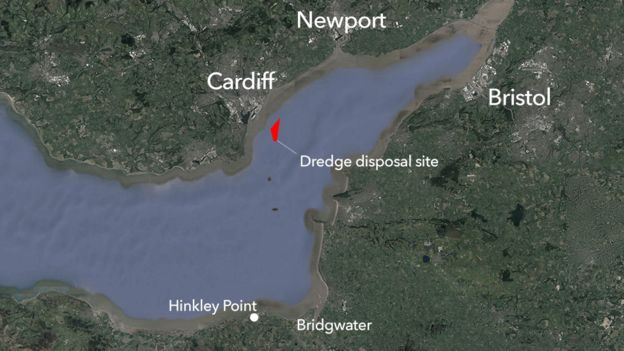Further protests in Cardiff against nuclear mud dumping off South Wales coast
Further protests took place today in Cardiff against plans to dump 300,000 tonnes of mud off the South Wales coast that has been dredged from near the Hinkley Point nuclear power stations in England. Hinkley Point A stopped producing electricity in 2000 after 35 years of operations and Hinkley Point B has been generating electricity since 1976. Now EDF plan to extract the mud and sediment with the aim of drilling six vertical shafts for the cooling water system for the new Hinkley Point C power station. Campaigners point to the danger of the mud being contaminated by discharges from the old Hinkley Point A and B.
Despite tests devised by the International Atomic Energy Agency being undertaken and claims that the deposits were safe, concerns continue to be raised. These include from Dr Richard Bramhall of the Low Level Radiation Campaign, who is a former member of the UK Government's Committee Examining Radiation Risks of Internal Emitters (CERRIE).
In a letter to Natural Resources Wales (NRW) he raised concerns that the tests did not assess whether uranium, plutonium and other alpha-emitting elements were present in minute “particulate” form.
He said: “As larger fragments break up, any given amount of particulate matter will become more mobile, be more easily inhaled into the deep lung and the lymphatic system, and will emit more radiation.”







